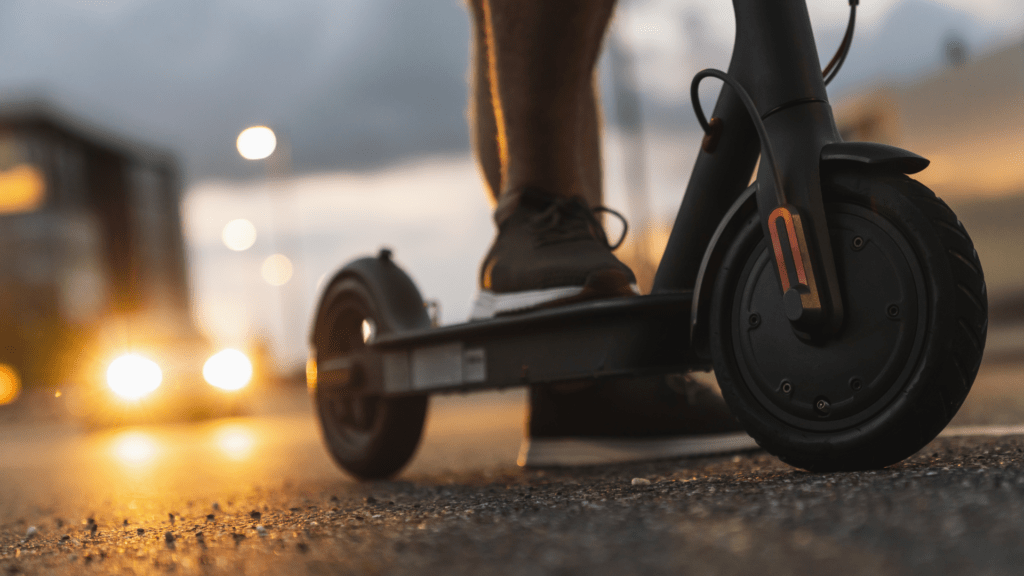Electric scooters have become a popular mode of transportation in many urban areas, offering a convenient and environmentally friendly way to get around. With the increasing use of electric scooters comes a growing concern for traffic safety.
In this article, we will delve into the current challenges and rising concerns related to e-scooter safety, as well as the impact of local regulations on e-scooter use. We will also explore the trends in e-scooter ridership and the need for rider education to enhance safety. We will address key safety issues with e-scooter use and propose solutions to enhance e-scooter traffic safety.
Join us as we uncover the complexities and potential solutions for ensuring the safe and responsible use of electric scooters in our cities.
Introduction to Electric Scooters and Traffic Safety
The rise of e-scooters in urban areas has brought attention to the importance of traffic safety and regulatory measures. With a surge in electric scooter usage, concerns about injuries, accidents, and the need for safety regulations have become significant.
The rapid proliferation of e-scooters has transformed urban mobility, offering a convenient and eco-friendly mode of transportation. This revolutionary shift has also posed numerous safety challenges.
A staggering increase in e-scooter-related injuries has been documented in recent years, prompting the CPSC to release alarming reports on the prevalent risks. Urban areas have witnessed a surge in accidents involving e-scooters, urging authorities to address the pressing need for stringent regulatory measures to safeguard public safety.
Overview of E-Scooter Use
An overview of e-scooter use encompasses its growing ridership, market penetration, and classification within the realm of micromobility devices.
E-scooters have experienced a significant increase in popularity as a convenient and eco-friendly mode of transportation in urban and suburban areas. The market dynamics of e-scooters are influenced by factors such as technological advancements, environmental concerns, and changing consumer preferences for alternative mobility solutions.
Safety regulations and consumer product standards play a crucial role in shaping the industry, ensuring that e-scooters adhere to specific criteria to guarantee the safety of riders and pedestrians alike. This has led to ongoing development and refinement of safety features and standards for e-scooters, emphasizing the importance of responsible operation and integration with existing urban infrastructure.
Current Challenges in E-Scooter Safety
The current challenges in e-scooter safety are evident in the rising cases of head trauma, fractures, and emergency department visits, highlighting the prevalence of product-related incidents and safety challenges.
These safety concerns have become more pronounced with the increasing popularity of e-scooters as a convenient mode of transportation in urban areas. The lack of standardized safety regulations and the behavior of e-scooter riders and pedestrians contribute to the elevated risk of accidents. The design and maintenance of e-scooters also play a significant role in the occurrence of injuries, especially head trauma and fractures.
The statistics from emergency department visits underscore the urgent need for comprehensive safety measures and awareness campaigns to mitigate these risks.
Rising Concerns about E-Scooter Traffic Safety
Rising concerns about e-scooter traffic safety have prompted in-depth studies on accidents, regulations, and their implementation within city environments.
E-scooter usage has soared in urban areas, leading to a surge in traffic-related incidents. Studies have shown that the most common causes of e-scooter accidents include reckless riding, lack of awareness about traffic rules, and inadequate safety measures.
Regulatory frameworks are being developed to address these issues, focusing on speed limits, designated lanes, and mandatory safety gear. Their practical implementation raises challenges due to the diverse landscapes and traffic patterns of different cities.
The integration of e-scooters into city regulations requires a delicate balance between promoting sustainable transportation and ensuring public safety. It involves collaboration between local authorities, transportation agencies, and e-scooter companies to establish comprehensive guidelines that mitigate risks for riders and pedestrians.
Local Regulations and E-Scooter Use
Local regulations play a pivotal role in shaping the dynamics of e-scooter use, involving coordination between local governments, transportation departments, and the prioritization of public safety.
These regulations aim to create a balance between embracing innovative mobility solutions and ensuring the safety of pedestrians and riders. Local governments are at the forefront of establishing regulatory frameworks that address issues such as e-scooter parking, speed limits, and rider behavior.
Collaborative efforts between transportation departments and local authorities lead to the implementation of safety education programs and infrastructure improvements, fostering the integration of e-scooters into urban transportation systems.
Impact of Local Rules on E-Scooter Use
The impact of local rules on e-scooter use is augmented through the implementation of behavioral safety programs and the enforcement of safety regulations.
These local rules play a crucial role in shaping the behavior of e-scooter riders, as they provide a framework for safe and responsible usage. Behavioral safety programs, such as educational initiatives and awareness campaigns, significantly contribute to promoting responsible e-scooter use.
The enforcement of safety regulations ensures that riders adhere to speed limits, wear proper safety gear, and follow traffic laws, all of which are essential for minimizing accidents and enhancing overall safety.
Challenges in Implementing Stricter E-Scooter Regulations
Challenges in implementing stricter e-scooter regulations stem from the need to raise public awareness about traffic rules and the significance of adhering to regulations for overall safety.
With the growing presence of e-scooters in urban areas, ensuring that riders and pedestrians coexist safely has become a pressing concern. One of the primary hurdles lies in educating the public about the specific rules and regulations pertaining to e-scooter usage. This involves emphasizing the importance of adhering to speed limits, designated paths, and traffic signals.
In addition, fostering a culture of responsibility among e-scooter riders is essential. Public awareness initiatives should highlight the potential risks associated with reckless riding and non-compliance with traffic laws. This is crucial for enhancing safety for both riders and other road users.
Increasing Ridership and Safety Concerns
The increasing ridership of e-scooters has intensified safety concerns pertaining to traffic safety and the prevalence of accidents in urban areas.
As e-scooter usage continues to soar, it has exacerbated the challenges of maintaining traffic safety within densely populated urban environments. With statistics indicating a significant rise in the number of riders, authorities and urban planners are grappling with the need to address the potential risks associated with this form of transportation. The surge in e-scooter usage has prompted a reevaluation of infrastructure and traffic management strategies to enhance safety and mitigate the growing concerns about accidents in these bustling urban centers.
Trends in E-Scooter Ridership
Trends in e-scooter ridership have garnered attention in market publications, highlighting the interplay between riders, injuries, and the imperative of enhancing traffic safety.
The increase in e-scooter usage has led to a surge in injuries and accidents, prompting concerns about urban traffic safety. Market insights reveal a growing preference for micro-mobility options and the impact of this shift on urban commuting patterns.
As more riders join the e-scooter community, challenges arise in managing traffic flows and ensuring pedestrian safety. Understanding the behavioral patterns of riders and their interaction with urban infrastructure becomes crucial in formulating effective safety measures and regulatory frameworks.
Rekindled Concerns about E-Scooter Safety
Rekindled concerns about e-scooter safety have spotlighted the escalation of emergency department visits due to product-related incidents, underscoring the urgency for robust regulatory frameworks.
According to recent statistics from emergency departments, the number of e-scooter-related injuries has surged, prompting concerns about the safety of these popular modes of transportation. The rise in incidents has underscored the pressing need for comprehensive regulatory enhancements to address these risks and protect riders, pedestrians, and other road users.
Understanding Rules of the Road for E-Scooter Riders
Understanding the rules of the road is imperative for e-scooter riders, necessitating public awareness initiatives and behavioral safety programs to foster adherence to traffic rules.
E-scooter riders must be informed about the applicable traffic regulations to ensure safe and responsible riding practices.
Public awareness initiatives such as educational campaigns and community outreach can play a significant role in promoting knowledge and understanding of traffic rules.
The implementation of behavioral safety programs can help to cultivate a culture of compliance and respect for road regulations among e-scooter users.
Importance of E-Scooter Riders Knowing Traffic Rules
The importance of e-scooter riders knowing traffic rules is underscored by the imperative to adhere to safety regulations and laws for the enhancement of public safety.
Compliance with these regulations not only ensures the personal safety of the rider but also contributes to the overall well-being of the community. By understanding and following traffic signals, speed limits, and designated lanes, e-scooter riders can significantly reduce the risk of accidents and promote a harmonious coexistence with other road users.
- It is essential for e-scooter riders to equip themselves with protective gear such as helmets and reflective clothing to increase their visibility, especially during low-light conditions.
- Obeying local ordinances and restrictions regarding where e-scooters can be used is crucial to avoid potential legal penalties and, more importantly, to safeguard pedestrians and other vulnerable road users.
Authorities constantly refine and update these regulations to accommodate the growing popularity of e-scooters and ensure the safety of all road users. Being informed and compliant with these measures not only benefits the individual rider but also fosters a more secure and efficient urban environment for everyone.”
Enhancing Safety Through Rider Education
Enhancing safety through rider education encompasses a multifaceted approach involving the reinforcement of safety regulations, the reduction of accidents, and the inculcation of awareness about traffic rules through behavioral safety programs.
By advocating for the implementation and adherence to safety regulations such as wearing appropriate protective gear and understanding road signs and signals, rider education aims to create a safer environment for all road users.
Efforts to reduce accidents include teaching defensive riding techniques, emphasizing the importance of situational awareness, and fostering responsible decision-making among riders.
Behavioral safety programs play a crucial role in promoting awareness about traffic rules by addressing the psychological and sociological aspects of rider behavior and decision-making, ultimately influencing positive changes in attitudes and actions on the road.
E-Scooter Safety Issues and Solutions
E-scooter safety issues are a subject of scrutiny, necessitating comprehensive studies, the involvement of CPSC, and the exploration of injury patterns to devise effective solutions.
The increasing popularity of e-scooters has led to a rise in safety concerns and incidents, prompting the urgent need for in-depth research. The Consumer Product Safety Commission (CPSC) plays a crucial role in regulating safety standards and investigating reported accidents, while also collaborating with industry stakeholders to enforce safety measures.
By diving into injury data and patterns, researchers can identify common risk factors and design targeted interventions to mitigate e-scooter-related injuries.
Identifying Key Safety Issues with E-Scooter Use
Identifying key safety issues with e-scooter use involves understanding the prevalence of fractures, head trauma, and their correlation with regulatory frameworks aimed at enhancing traffic safety.
Reports show that fractures and head trauma are the most common injuries associated with e-scooter accidents, often leading to hospital admissions and long-term rehabilitation. Understanding the patterns and causes of these injuries is crucial for formulating effective safety regulations.
The interplay between e-scooter usage and traffic safety regulations presents a complex challenge. As these convenient modes of transport become increasingly popular, regulatory frameworks must evolve to address the safety concerns they pose. Balancing the promotion of sustainable mobility with safeguarding public well-being calls for a collaborative effort from policymakers, urban planners, and safety advocates.
Proposed Solutions to Enhance E-Scooter Traffic Safety
Proposed solutions to enhance e-scooter traffic safety encompass initiatives aimed at bolstering public safety, streamlining implementation strategies, and mitigating the occurrence of accidents through targeted regulations.
One key initiative involves the implementation of designated e-scooter lanes and zones in urban areas, segregating e-scooter traffic from pedestrians and vehicles, thus minimizing the risk of collisions. Enhancing rider education and awareness programs can contribute to reducing the frequency of accidents, emphasizing the importance of adhering to traffic laws and safe riding practices.
Simultaneously, integrating advanced technologies, such as geofencing and speed-limiting mechanisms, into e-scooter design and operations can enforce safer riding behaviors and compliance with regulatory measures. Fostering collaboration with local authorities to establish comprehensive licensing and registration frameworks for e-scooters can aid in monitoring and regulating their usage effectively.
Frequently Asked Questions
What are electric scooters and why are they becoming a popular form of transportation?
Electric scooters are small, motorized vehicles that run on rechargeable batteries. They have become popular due to their convenience and eco-friendliness compared to traditional modes of transportation.
What are the main challenges that electric scooters pose for traffic safety?
The main challenges include inexperienced riders, lack of regulations and infrastructure, and the potential for accidents involving pedestrians and other vehicles.
How do electric scooters impact traffic flow and congestion?
Electric scooters can contribute to traffic congestion if riders use them in areas with heavy traffic or if they are not parked properly. However, they can also help reduce traffic in congested areas by providing an alternative mode of transportation.
What are some safety measures that riders can take to minimize the risk of accidents?
Riders should always wear a helmet, follow traffic laws and signals, and be aware of their surroundings. They should also avoid riding under the influence of drugs or alcohol.
What are some current regulations for electric scooters and what changes are being proposed?
Currently, regulations for electric scooters vary by location. Some cities have implemented speed limits, designated parking areas, and age restrictions. Proposed changes include stricter regulations and the requirement for riders to have a valid driver’s license.
How can cities and communities address the emerging challenge of electric scooter safety?
Cities and communities can implement stricter regulations, invest in infrastructure for electric scooters, and educate riders and the general public about safe usage. They can also work with scooter companies to improve safety features on the vehicles.





